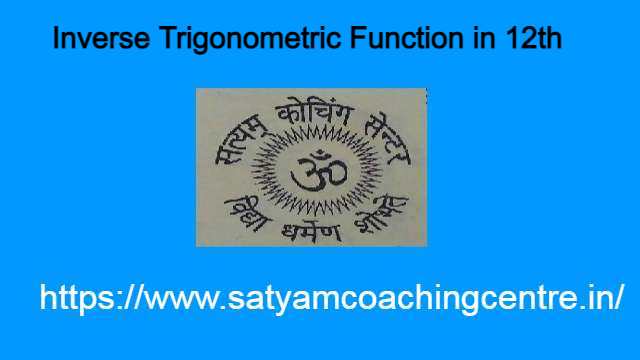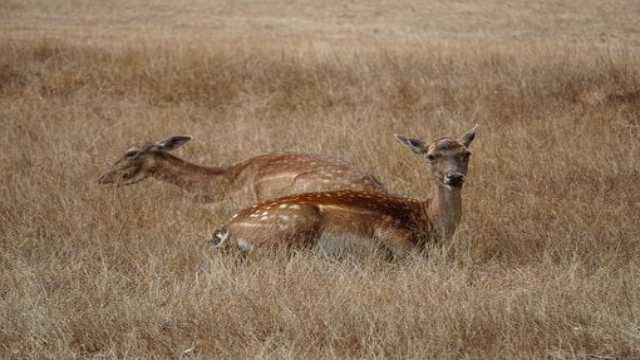Inverse Trigonometric Function in 12th
1.कक्षा 12 में प्रतिलोम त्रिकोणमितीय फलन (Inverse Trigonometric Function in 12th),प्रतिलोम त्रिकोणमितीय फलनों के गुणधर्म (Properties of Inverse Trigonometric Functions):
कक्षा 12 में प्रतिलोम त्रिकोणमितीय फलनों (Inverse Trigonometric Function in 12th) के गुणधर्म का अध्ययन कर चुके हैं।इस आर्टिकल में प्रतिलोम फलनों के गुणधर्म पर आधारित उदाहरणों के द्वारा समझने का प्रयास करेंगे।
आपको यह जानकारी रोचक व ज्ञानवर्धक लगे तो अपने मित्रों के साथ इस गणित के आर्टिकल को शेयर करें।यदि आप इस वेबसाइट पर पहली बार आए हैं तो वेबसाइट को फॉलो करें और ईमेल सब्सक्रिप्शन को भी फॉलो करें।जिससे नए आर्टिकल का नोटिफिकेशन आपको मिल सके । यदि आर्टिकल पसन्द आए तो अपने मित्रों के साथ शेयर और लाईक करें जिससे वे भी लाभ उठाए । आपकी कोई समस्या हो या कोई सुझाव देना चाहते हैं तो कमेंट करके बताएं।इस आर्टिकल को पूरा पढ़ें।
Also Read This Article:-Property of Inverse Circular Function
2.कक्षा 12 में प्रतिलोम त्रिकोणमितीय फलन पर आधारित उदाहरण (Examples Based on Inverse Trigonometric Function in 12th):
निम्नलिखित को सिद्ध कीजिएः
Example:1. 3 \sin ^{-1} x=\sin ^{-1}\left(3 x-4 x^3\right) \quad x \in\left[-\frac{1}{2}, \frac{1}{2}\right]
Solution: 3 \sin ^{-1} x=\sin ^{-1}\left(3 x-4 x^3\right)
माना \sin ^{-1} x=\theta \Rightarrow \sin \theta=x \\ \sin 3 \theta=3 \sin \theta-4 \sin ^3 \theta \\ =3 x-4 x^3 \\ \Rightarrow 3 \theta=\sin ^{-1}\left(3 x-4 x^3\right) \\ \Rightarrow 3 \sin ^{-1} x=\sin ^{-1}(3 x-4 x^{3})
Example:2. 3 \cos ^{-1} x=\cos ^{-1}\left(4 x^3-3 x\right) \quad x \in\left[-\frac{1}{2}, \frac{1}{2}\right]
Solution:3 \cos ^{-1} x=\cos ^{-1}\left(4 x^3-3 x\right)
माना \cos ^{-1} x=\theta \Rightarrow x=\cos \theta \\ \cos 3 \theta=4 \cos ^3 \theta-3 \cos \theta \\ =4 x^3-3 x \\ \Rightarrow 3 \theta=\cos ^{-1}\left(4 x^3-3 x\right) \\ \Rightarrow 3 \cos ^{-1} x=\cos ^{-1}\left(4 x^3-3 x\right)
Example:3. \tan ^{-1}\left(\frac{2}{11}\right)+\tan ^{-1}\left(\frac{7}{24}\right)=\tan ^{-1}\left(\frac{1}{2}\right)
Solution: \tan ^{-1}\left(\frac{2}{11}\right)+\tan \left(\frac{7}{24}\right)=\tan ^{-1}\left(\frac{1}{2}\right) \\ \text{ L.H.S. } \tan \left(\frac{2}{11}\right)+\tan ^{-1}\left(\frac{7}{24}\right) \\ \Rightarrow \tan ^{-1} \left(\frac{\frac{2}{11}+\frac{7}{24}}{1-\frac{2}{11} \times \frac{7}{24}}\right) \\ \Rightarrow \tan ^{-1} \left(\frac{\frac{48+77}{264}}{264-14}\right) \\ \Rightarrow \tan ^{-1}\left(\frac{125}{250}\right) \\ \Rightarrow \tan ^{-1}\left(\frac{1}{2}\right)=\text { R.H.S }
Example:4. 2 \tan ^{-1}\left(\frac{1}{2}\right)+\tan \left(\frac{1}{7}\right)=\tan \left(\frac{31}{17}\right)
Solution: 2 \tan ^{-1}\left(\frac{1}{2}\right)+\tan ^{-1}\left(\frac{1}{7}\right)=\tan ^{-1}\left(\frac{31}{17}\right) \\ \text { L.H.S. }=2 \tan ^{-1}\left(\frac{1}{2}\right)+\tan ^{-1}\left(\frac{1}{7}\right) \\ \Rightarrow \tan ^{-1}\left(\frac{2 \times \frac{1}{2}}{1-\left(\frac{1}{2}\right)^2}\right)+\tan ^{-1} \left( \frac{1}{7}\right) \\ \Rightarrow \tan \left(\frac{1}{1-\frac{1}{4}}\right)+\tan ^{-1}\left(\frac{1}{7}\right) \\ \Rightarrow \tan ^{-1}\left(\frac{1}{\frac{3}{4}}\right)+\tan ^{-1}\left(\frac{1}{7}\right) \\ \Rightarrow \tan ^{-1}\left(\frac{4}{3}\right)+\tan ^{-1}\left(\frac{1}{7}\right) \\ \Rightarrow \tan ^{-1}\left(\frac{\frac{4}{3}+ \frac{1}{7}}{1-\frac{4}{3} \times \frac{1}{7}}\right) \\ \Rightarrow \tan ^{-1}\left(\frac{\frac{28+3}{21}}{\frac{21-4}{21}}\right) \\ \Rightarrow \tan ^{-1}\left(\frac{31}{17}\right)=\text { R.H.S. }
निम्नलिखित फलनों को सरलतम रूप में लिखिएः
Example:5. \tan ^{-1} \frac{\sqrt{1+x^2}-1}{x}, x \neq 0
Solution: \tan ^{-1} \frac{\sqrt{1+x^2-1}}{x} \\ \operatorname{put} x=\tan \theta \Rightarrow \theta=\tan ^{-1} x \\ \tan^{-1} \left[\frac{\sqrt{1+\tan ^2 \theta}-1}{\tan \theta}\right] \\ = \tan ^{-1} \left[ \frac{\sqrt{\sec ^2 \theta}-1}{\tan \theta}\right] \\ =\tan \left[\frac{\sec \theta-1}{\tan \theta}\right] \\ =\tan ^{-1}\left[\frac{\frac{1}{\cos \theta}-1}{\frac{\sin \theta}{\cos \theta}}\right] \\ =\tan ^{-1}\left[ \frac{\frac{1-\cos \theta}{\cos \theta}}{\frac{\sin \theta}{\cos \theta}}\right] \\ =\tan ^{-1}\left(\frac{1-\cos \theta}{\sin \theta}\right) \\ =\tan ^{-1}\left[\frac{1-\left(1-2 \sin ^2 \frac{\theta}{2}\right)}{2 \sin \frac{\theta}{2} \cos \frac{\theta}{2}}\right] \\ =\tan ^{-1}\left[\frac{1-1+2 \sin ^2 \frac{2}{2}}{2 \sin \frac{\theta}{2} \cos \frac{\theta}{2}}\right] \\ =\tan ^{-1}\left[\frac{2 \sin ^2 \frac{\theta}{2}}{2 \sin \frac{\theta}{2} \cos \frac{\theta}{2}}\right] \\ =\tan ^{-1}\left[\frac{\sin \frac{\theta}{2}}{\cos \frac{\theta}{2}}\right] \\ =\tan ^{-1}\left(\tan \frac{\theta}{2}\right) \\ =\frac{\theta}{2} \\ =\frac{1}{2} \tan ^{-1} x
Example:6. \tan ^{-1} \frac{1}{\sqrt{x^2-1}},|x|>1
Solution: \tan ^{-1} \frac{1}{\sqrt{x^2-1}} \\ \text { Put } x=\sec \theta \Rightarrow \theta=\sec ^{-1} x \\ =\tan^{-1} \frac{1}{\sqrt{\sec ^2 \theta-1}} \\=\tan ^{-1}\left(\frac{1}{\sqrt{\tan ^2 \theta}}\right) \\ =\tan ^{-1}\left(\frac{1}{\tan \theta}\right) \\ =\tan (\cot \theta) \\ =\tan \left[\tan \left(\frac{\pi}{2}-\theta\right)\right] \\ =\frac{\pi}{2}-\theta \\ =\frac{\pi}{2}-\sec ^{-1} x
Example:7. \tan ^{-1}\left(\sqrt{\frac{1-\cos x}{1+\cos x}}\right), x<\pi
Solution: \tan ^{-1}\left(\sqrt{\frac{1-\cos x}{1+\cos x}}\right) \\ =\tan \left[\sqrt{\frac{1-\left(1-2 \sin ^2 \frac{x}{2}\right)}{1+2 \cos ^2 \frac{x}{2}-1}}\right] \\ =\tan ^{-1}\left[\sqrt{\frac{1-1+2 \sin ^2 \frac{x}{2}}{2 \cos ^2 \frac{x}{2}}}\right] \\ =\tan ^{-1}\left(\sqrt{\frac{2 \sin ^2 \frac{x}{2}}{2 \cos ^2 \frac{x}{2}}}\right) \\ =\tan ^{-1}\left(\sqrt{\tan ^2 \frac{x}{2}}\right) \\ =\tan ^{-1}\left(\tan \frac{x}{2}\right) \\ =\frac{x}{2}
Example:8. \tan ^{-1}\left(\frac{\cos x-\sin x}{\cos x+\sin x}\right) x<\pi
Solution: \tan ^{-1}\left(\frac{\cos x-\sin x}{\cos x+\sin x}\right) \\ =\tan ^{-1}\left[\frac{\cos x(1-\tan x)}{\cos x(1+\tan x)}\right] \\ =\tan ^{-1}\left[\frac{\tan \frac{\pi}{4}-\tan x}{1+\tan \left(\frac{\pi}{4}\right) \tan x}\right] \\ =\tan ^{-1}\left[\tan \left(\frac{\pi}{4}-x\right)\right] \\ =\frac{\pi}{4}-x
Example:9. \tan^{-1} \frac{x}{\sqrt{a^2-x^2}} ;|x|<a
Solution: \tan ^{-1} \frac{x}{\sqrt{a^2-x^2}} \\ \text { put } x=a \sin \theta \Rightarrow \theta=\sin ^{-1}\left(\frac{x}{a}\right) \\ =\tan ^{-1}\left(\frac{a \sin \theta}{\sqrt{a^2-a^2 \sin ^2 \theta}}\right) \\ =\tan ^{-1}\left(\frac{a \sin \theta}{\sqrt{a^{2}\left(1-\sin ^2 \theta\right)}}\right) \\ =\tan ^{-1}\left(\frac{a \sin \theta}{a \sqrt{\cos ^2 \theta}}\right) \\ =\tan ^{-1}\left(\frac{\sin \theta}{\cos \theta}\right) \\ =\tan ^{-1}(\tan \theta) \\ =\theta \\ =\sin ^{-1}\left(\frac{x}{a}\right)
Example:10. \tan ^{-1}\left(\frac{3 a^2 x-x^3}{a^3-3 a x^2}\right),a>0, \frac{-a}{\sqrt{3}} \leq x \leq \frac{a}{\sqrt{3}}
Solution: \tan ^{-1}\left(\frac{3 a^2 x-x^3}{a^3-3 a x^2}\right) \\ \text { Put } x=a \tan \theta \Rightarrow \theta=\tan ^{-1}\left(\frac{x}{a}\right) \\ =\tan^{-1} \left(\frac{3 a^3 \tan \theta-3 \tan ^3 \theta}{a^3-3 a^3 \tan ^2 \theta}\right) \\ =\tan ^{-1}\left[\frac{a^3\left(3 \tan \theta-\tan ^3 \theta\right)}{a^3\left(1-3 \tan ^2 \theta\right.}\right] \\ =\tan ^{-1}\left(\frac{3 \tan \theta-\tan ^3 \theta}{1-3 \tan ^2 \theta}\right) \\ =\tan^{-1} (\tan 3 \theta) \\ =3 \theta \\ =3 \tan^{-1} \left(\frac{x}{a}\right)
निम्नलिखित में से प्रत्येक का मान ज्ञात कीजिएः
Example:11. \tan^{-1} \left[2 \cos \left(2 \sin ^{-1} \frac{1}{2}\right)\right]
Solution: \tan^{-1} \left[2 \cos \left(2 \sin ^{-1} \frac{1}{2}\right)\right] \\ =\tan ^{-1}\left[2 \cos \left\{\sin ^{-1}\left(2 \times \frac{1}{2} \sqrt{1-\left(\frac{1}{2}\right)^2}\right)\right\}\right] \\ \left[ \because 2 \sin ^{-1} x=\sin^{-1}\left(2 x \sqrt{1-x^{2}}\right)\right] \\ =\tan ^{-1}\left[2 \cos \left\{\sin ^{-1} \sqrt{1-\frac{1}{4}}\right\}\right] \\ =\tan ^{-1}\left[2 \cos \left(\sin ^{-1} \sqrt{\frac{3}{4}}\right)\right] \\ =\tan ^{-1}\left[2 \cos \left\{\sin ^{-1}\left(\frac{\sqrt{3}}{2}\right)\right\}\right] \\ =\tan ^{-1}\left[2 \cos \left\{\cos ^{-1}\left(\frac{1}{2}\right)\right\}\right] \\ =\tan ^{-1}\left[2 \times \frac{1}{2}\right] \\ =\tan^{-1} (1) \\ =\frac{\pi}{4}
Example:12. \cot \left(\tan ^{-1} a+\cot ^{-1} a\right)
Solution:\cot \left(\tan ^{-1} a+\cot a\right) \\ =\cot \left(\frac{\pi}{2}\right) \quad\left[\because \tan^{-1} x+\cot^{-1} x=\frac{\pi}{2}\right] \\ =0
Example:13 \tan \frac{1}{2}\left[\sin ^{-1} \frac{2 x}{1+x^2}+\cos ^{-1} \frac{1-y^{2}}{1+y^2}\right], \mid x \mid <1,y>0 तथा xy<1
Solution: \tan \frac{1}{2}\left[\sin ^{-1} \frac{2 x}{1+x^2}+\cos ^{-1} \frac{1-y^2}{1+y^2}\right] \\ \text { put } x=\tan \theta \Rightarrow \theta=\tan ^{-1} x, y=\tan \phi \Rightarrow \phi=\tan ^{-1} y \\ \tan \frac{1}{2}\left[\sin ^{-1}\left(\frac{2 \tan \theta}{1+\tan ^2 \theta}\right)+\cos ^{-1}\left(\frac{1-\tan ^2 \phi}{1+\tan ^2 \phi}\right)\right] \\ \tan \frac{1}{2}\left[\sin ^{-1}(\sin 2 \theta)+\cos ^{-1}(\cos 2 \phi) \right] \\ {\left[\because \frac{2 \tan \theta}{1+\tan ^2 \theta}-\sin 2 \theta, \frac{1-\tan ^2 \phi}{1+\tan ^2 \phi}=\cos 2 \phi\right]} \\ \tan \frac{1}{2}[2 \theta+2 \phi] \\ =\tan \frac{1}{2} \times 2(\theta+\phi) \\ =\tan (\theta+\phi) \\ =\frac{\tan \theta+\tan \phi}{1-\tan \theta \tan \phi} \\ =\frac{x+y}{1-x y}
Example:14.यदि \sin \left(\sin ^{-1} \frac{1}{5}+\cos ^{-1} x\right)=1,तो x का मान ज्ञात कीजिए।
Solution: \sin \left(\sin ^{-1} \frac{1}{5}+\cos ^{-1} x\right)=1 \\ \Rightarrow \sin ^{-1} \frac{1}{5}+\cos ^{-1} x=\sin ^{-1}(1) \\ \Rightarrow \sin ^{-1}\left(\frac{1}{5}\right)+\cos ^{-1} x=\frac{\pi}{2} \\ \Rightarrow \cos ^{-1} x=\frac{\pi}{2}-\sin ^{-1} \frac{1}{5} \\ \Rightarrow \cos ^{-1} x=\cos ^{-1} \frac{1}{5}\left[\because \sin ^{-1} x+\cos ^{-1} x=\frac{1}{2}\right] \\ \Rightarrow x=\frac{1}{5}
Example:15.यदि \tan^{-1} \frac{x-1}{x-2}+\tan^{-1} \frac{x+1}{x+2}=\frac{\pi}{4} तो x का मान ज्ञात कीजिए।
Solution: \tan^{-1} \frac{x-1}{x-2}+\tan^{-1} \frac{x+1}{x+2}=\frac{\pi}{4} \\ \tan^{-1} \left[ \frac{\frac{x-1}{x-2}+\frac{x+1}{x+2}}{1-\left(\frac{x-1}{x-2}\right)\left(\frac{x+1}{x+2}\right)} \right] =\frac{\pi}{4} \\ \Rightarrow \frac{\frac{(x-1)(x+2)+(x+1)(x-2)}{(x-2)(x+2)}}{\frac{(x-2)(x+2)-(x-1)(x+1)}{(x-2)(x+2)}}=\tan^{-1} \frac{\pi}{4} \\ \Rightarrow \frac{x^2+x-2+x^2-x-2}{x^2-4-\left(x^2-1\right)}=1 \\ \Rightarrow \frac{2 x^2-4}{-3}=1 \\ \Rightarrow 2 x^2-4=-3 \\ \Rightarrow 2 x^2=4-3 \\ \Rightarrow 2 x^2=1 \Rightarrow x^2=\frac{1}{2} \\ \Rightarrow x= \pm \frac{1}{\sqrt{2}}
प्रश्न संख्या 16 से 18 में दिए व्यंजक का मान ज्ञात कीजिएः
Example:16. \sin^{-1} \left(\sin \frac{2 \pi}{3}\right)
Solution: \sin^{-1} \left(\sin \frac{2 \pi}{3}\right) \\ =\sin ^{-1}\left[\sin \left(\pi-\frac{\pi}{3}\right)\right] \\ =\sin ^{-1}\left[\sin \frac{\pi}{3}\right] \\ =\frac{\pi}{3} \\ \Rightarrow \sin^{-1} \left(\sin \frac{2 \pi}{3}\right)=\frac{\pi}{3}
Example:17. \tan ^{-1}\left(\tan \frac{3 \pi}{4}\right) , \quad \frac{3 \pi}{4} \not \in\left(-\frac{\pi}{2},\frac{\pi}{2}\right)
Solution:\tan ^{-1}\left(\tan \frac{3 \pi}{4}\right)
अतः \tan ^{-1}\left[\tan \left(\pi-\frac{\pi}{4}\right)\right] \\ =\tan ^{-1}(-\tan \frac{\pi}{4}) \\ =\tan ^{-1}\left[ \tan (-\frac{\pi}{4})\right ]\\ =\frac{\pi}{4} \in\left(-\frac{\pi}{2},\frac{\pi}{2}\right)
अतः \tan ^{-1}\left(\tan \frac{3 \pi}{4}\right)=-\frac{\pi}{4}
Example:18. \tan \left(\sin ^{-1} \frac{3}{5}+\cot^{-1} \frac{3}{2}\right)
Solution: \tan \left(\sin ^{-1} \frac{3}{5}+\cot^{-1} \frac{3}{2}\right) \\ =\tan \left(\tan^{-1} \frac{3}{4}+\cot ^{-1} \frac{3}{2}\right) \\ =\tan \left(\tan^{-1} \frac{3}{4}+\tan^{-1} \frac{2}{3}\right) \\ \left[ \tan^{-1}x= \cot^{-1} \frac{1}{x} \right ]\\ =\tan \left[\tan ^{-1}\left(\frac{\frac{3}{4}+\frac{2}{3}}{1-\frac{3}{4} \times \frac{2}{3}}\right)\right] \\ =\tan \left[\tan ^{-1} \left(\frac{\frac{9+8}{12}}{\frac{2-1}{2}}\right)\right] \\ =\frac{\frac{17}{12}}{\frac{1}{2}}=\frac{17}{6}
Example:19. \cos ^{-1}\left(\cos \frac{7 \pi}{6} \right) का मान बराबर हैः
(A) \frac{7 \pi}{6} (B) \frac{5 \pi}{6} (C) \frac{\pi}{3} (D) \frac{\pi}{6}
Solution: \cos ^{-1}\left(\cos \frac{7 \pi}{6}\right), \frac{7 \pi}{6} \not \in [0, \pi] \\ \cos^{-1} \left[\cos \left(2 \pi-\frac{\pi}{6}\right)\right] \\ \cos^{-1} \left[\cos \left(\frac{5 \pi}{6}\right)\right] \\ =\frac{5 \pi}{6}
अतः सही विकल्प (B) है।
Example:20. \sin \left[\frac{\pi}{3}-\sin ^{-1}\left(-\frac{1}{2}\right)\right] का मान हैः
(A) \frac{1}{2} (B) \frac{1}{3} (C) \frac{1}{4} (D) 1
Solution: \sin \left[\frac{\pi}{3}-\sin ^{-1}\left(-\frac{1}{2}\right)\right] \\ =\sin \left[\frac{\pi}{3}+\sin \frac{1}{2}\right] \\ =\sin \left[\frac{\pi}{3}+\frac{\pi}{6}\right] \\ =\sin \left(\frac{\pi}{2}\right) \\ =1
सही विकल्प (D) है।
Example:21. \tan ^{-1} \sqrt{3}-\cot ^{-1}(-\sqrt{3}) का मान हैः
(A) \pi (B) –\frac{\pi}{2} (C) 0 (D) 2 \sqrt{3}
Solution: \tan ^{-1} \sqrt{3}-\cot (-\sqrt{3}) \\ =\frac{\pi}{3}-\left[\pi-\cot ^{-1}(\sqrt{3})\right] \\ =\frac{\pi}{3}-\pi+\frac{\pi}{6} \\ =\frac{2 \pi-6 \pi+\pi}{6} \\ =\frac{-3 \pi}{6} \\ =\frac{-\pi}{2}
अतः सही विकल्प (B) है।
उपर्युक्त उदाहरणों के द्वारा कक्षा 12 में प्रतिलोम त्रिकोणमितीय फलन (Inverse Trigonometric Function in 12th),प्रतिलोम त्रिकोणमितीय फलनों के गुणधर्म (Properties of Inverse Trigonometric Functions) को समझ सकते हैं।
3.कक्षा 12 में प्रतिलोम त्रिकोणमितीय फलन के सवाल (Inverse Trigonometric Function in 12th Questions):
सिद्ध कीजिएः
(1.) \cos ^{-1} \frac{63}{65}+2 \tan ^2 \frac{1}{5}=5 \sin \frac{3}{5}
(2.) \tan ^{-1} \sqrt{\frac{a x}{b c}}+\tan ^{-1} \sqrt{\frac{b x}{c a}}+\tan ^{-1} \sqrt{\frac{c x}{a b}}=\pi जहाँ a+b+c=x
(3.) \frac{1}{2} \tan x=\cos ^{-1}\left\{\frac{1+\sqrt{1+x^2}}{2 \sqrt{1+x^2}}\right\}^{\frac{1}{2}}
उपर्युक्त सवालों को हल करने पर कक्षा 12 में प्रतिलोम त्रिकोणमितीय फलन (Inverse Trigonometric Function in 12th),प्रतिलोम त्रिकोणमितीय फलनों के गुणधर्म (Properties of Inverse Trigonometric Functions) को ठीक से समझ सकते हैं।
Also Read This Article:-Inverse Trigonometric Functions 12th
4.कक्षा 12 में प्रतिलोम त्रिकोणमितीय फलन (Frequently Asked Questions Related to Inverse Trigonometric Function in 12th),प्रतिलोम त्रिकोणमितीय फलनों के गुणधर्म (Properties of Inverse Trigonometric Functions) से सम्बन्धित अक्सर पूछे जाने वाले प्रश्न:
प्रश्न:1.त्रिकोणमिति में प्रारम्भिक योगदान क्या भारतीय गणितज्ञों ने दिया था? (Did Indian Mathematicians Make the Initial Contribution to Trigonometry?):
उत्तर:ऐसा विश्वास किया जाता है कि त्रिकोणमिति का अध्ययन सर्वप्रथम भारत में आरम्भ हुआ था।आर्यभट (476 ई),ब्रह्मगुप्त (598 ई.),भास्कर प्रथम (600 ई.) तथा भास्कर द्वितीय (1114 ई) ने प्रमुख परिणामों को प्राप्त किया था।यह सम्पूर्ण ज्ञान भारत से मध्यपूर्व और पुनः वहाँ से यूरोप गया।यूनानियों ने भी त्रिकोणमिति का अध्ययन आरम्भ किया परन्तु उनकी कार्य विधि इतनी अनुपयुक्त थी कि भारतीय विधि के ज्ञात हो जाने पर यह सम्पूर्ण विश्व द्वारा अपनाई गई।
भारत में आधुनिक त्रिकोणमितीय फलन जैसे किसी कोण की ज्या (sine) और फलन के परिचय का पूर्ण विवरण सिद्धान्त (संस्कृत भाषा में लिखा ज्यामितीय कार्य) में दिया गया है जिसका योगदान गणित के इतिहास में प्रमुख है।
भास्कर प्रथम (600 ई.) ने 90° से अधिक, कोणों के sine के मान के लिए सूत्र दिया था।सोलहवीं शताब्दी का मलयालम भाषा में \sin (A+B) के प्रसार की एक उपपत्ति है।18°,36°,54°,72° आदि के sine और cosine के विशुद्ध मान भास्कर द्वितीय द्वारा दिए गए हैं।
प्रश्न:2.त्रिकोणमिति में पाश्चात्य गणितज्ञों का प्रारम्भिक योगदान क्या है? (What is the Initial Contribution of Western Mathematicians to Trigonometry?):
उत्तर: \sin^{-1} x, \cos^{-1} x आदि को चाप \sin x चाप \cos x आदि के स्थान पर प्रयोग करने का सुझाव ज्योतिषविद Sir John F. W. Hersehel (1813ई) द्वारा दिये गये थे।ऊँचाई और दूरी सम्बन्धित प्रश्नों के साथ Thales (600 ई. पू.) का नाम अपरिहार्य रूप से जुड़ा हुआ है।इन्हें मिश्र के महान् पिरामिड की ऊँचाई के मापन का श्रेय प्राप्त है।इसके लिए उन्होंने एक ज्ञात ऊँचाई के सहायक दण्ड तथा पिरामिड की परछाइयों को नापकर उनके अनुपातों की तुलना का प्रयोग किया था।ये अनुपात हैं
\frac{H}{s}=\frac{h}{s}=\tan (सूर्य का उन्नतांश)
Thales को समुद्री जहाज की दूरी की गणना करने का भी श्रेय दिया जाता है।इसके लिए उन्होंने समरूप त्रिभुजों के अनुपात का प्रयोग किया था।ऊँचाई और दूरी सम्बन्धी प्रश्नों का हल समरूप त्रिभुजों की सहायता से प्राचीन भारतीय कार्यों में मिलते हैं।
प्रश्न:3.व्लादिमीर अर्नोल्ड के अनुसार गणित की परिभाषा क्या है? (What is the Definition of Mathematics According to VLADIMIR ARNOLD?):
उत्तर:प्रमाण गणित के लिए हैं जो कविता के लिए सुलेख है।गणितीय कार्यों में सबूत होते हैं जैसे कविताओं में पात्र होते हैं
-व्लादिमीर अर्नोल्ड
(Proofs are to Mathematics what calligraphy is to poetry.Mathematical works do consist of proofs just as poems do consist of characters
-VLADIMIR ARNOLD)
उपर्युक्त प्रश्नों के उत्तर द्वारा कक्षा 12 में प्रतिलोम त्रिकोणमितीय फलन (Inverse Trigonometric Function in 12th),प्रतिलोम त्रिकोणमितीय फलनों के गुणधर्म (Properties of Inverse Trigonometric Functions) के बारे में ओर अधिक जानकारी प्राप्त कर सकते हैं।
| No. | Social Media | Url |
|---|---|---|
| 1. | click here | |
| 2. | you tube | click here |
| 3. | click here | |
| 4. | click here | |
| 5. | Facebook Page | click here |
| 6. | click here |
Inverse Trigonometric Function in 12th
कक्षा 12 में प्रतिलोम त्रिकोणमितीय फलनों
(Inverse Trigonometric Function in 12th)
Inverse Trigonometric Function in 12th
कक्षा 12 में प्रतिलोम त्रिकोणमितीय फलनों (Inverse Trigonometric Function in 12th)
के गुणधर्म का अध्ययन कर चुके हैं।
Related Posts
About Author
Satyam
About my self I am owner of Mathematics Satyam website.I am satya narain kumawat from manoharpur district-jaipur (Rajasthan) India pin code-303104.My qualification -B.SC. B.ed. I have read about m.sc. books,psychology,philosophy,spiritual, vedic,religious,yoga,health and different many knowledgeable books.I have about 15 years teaching experience upto M.sc. ,M.com.,English and science.








